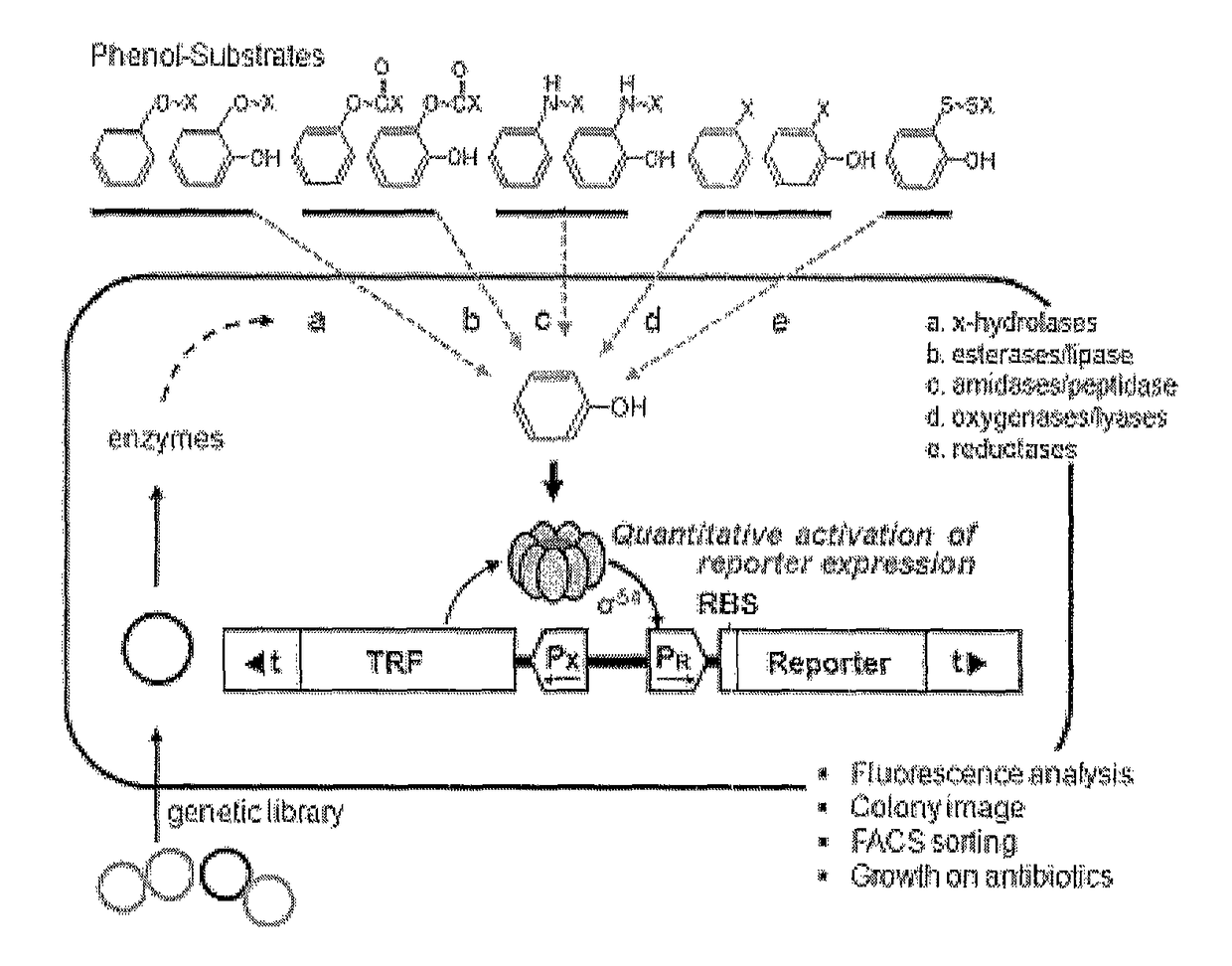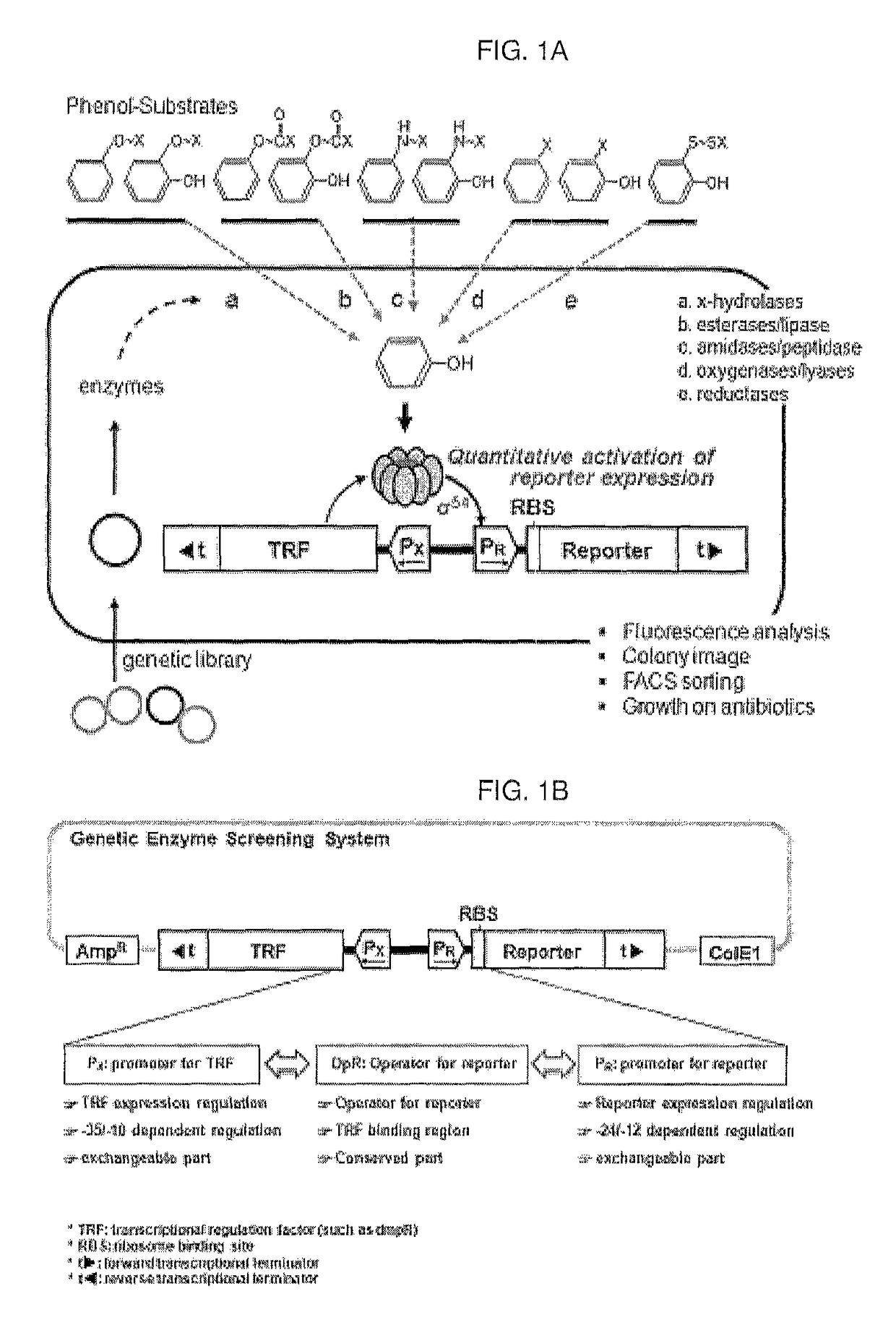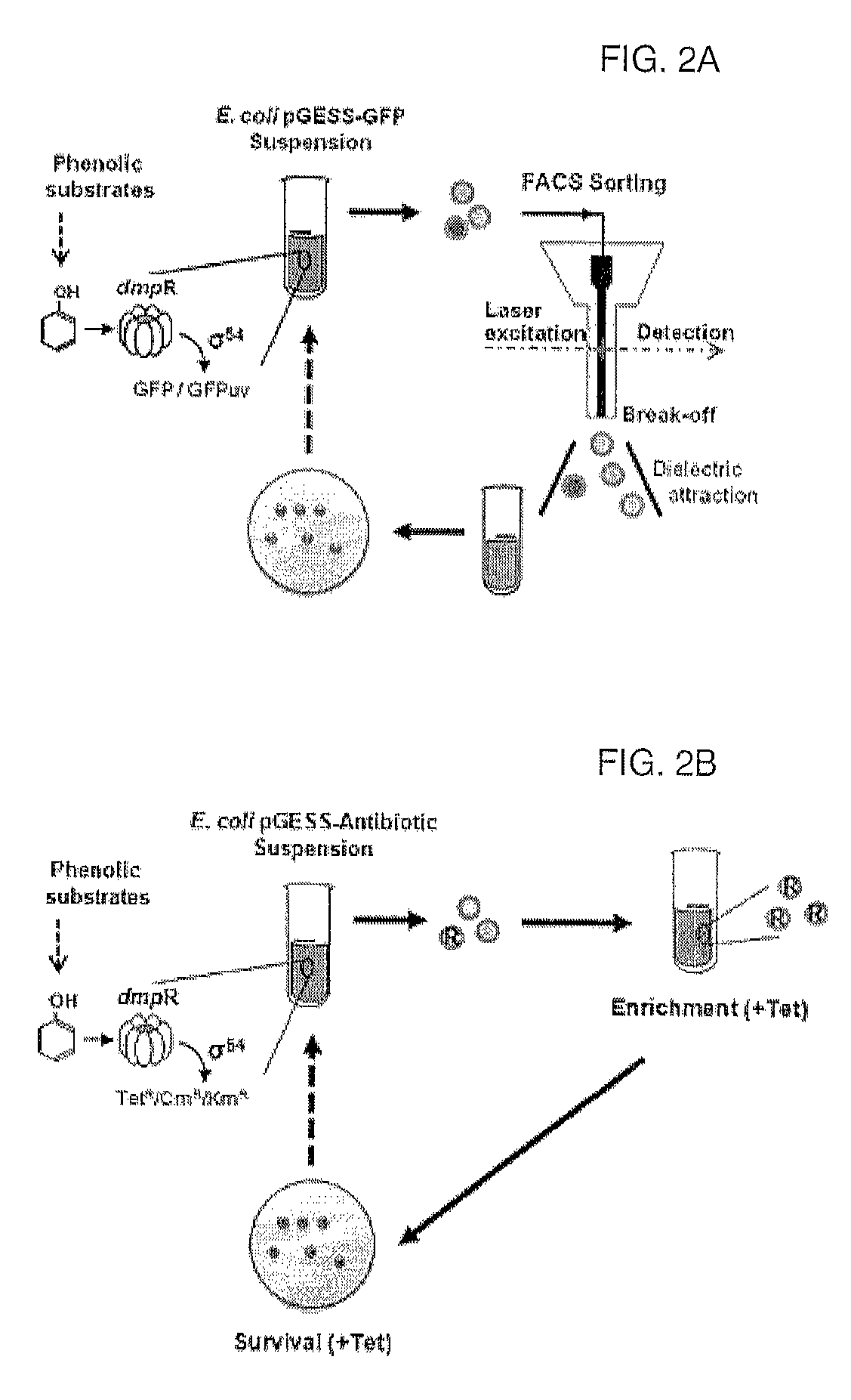Method of screening and quantifying various enzymatic activities using artificial genetic circuits
a technology of artificial genetic circuits and enzymatic activity, applied in the field of methods of screening and quantifying various enzymatic activity, can solve the problems of limited application of these methods, limited microbial species that can actually be cultured in laboratories, and limited application of genetic resources
- Summary
- Abstract
- Description
- Claims
- Application Information
AI Technical Summary
Benefits of technology
Problems solved by technology
Method used
Image
Examples
example 1
ion of Artificial Genetic Circuit Based on the Expression Regulator dmpR Detecting Phenol
[0109]An artificial genetic circuit comprises a phenolic compound-degrading enzyme regulatory protein region, a gene expression regulatory region comprising promoters, and at least one reporter region selected from fluorescence proteins and antibiotic resistance genes.
[0110]An artificial genetic circuit (pGESS-FP) based on the plasmid pUC19 was constructed using Pseudomonas putida-derived phenol catabolic dmp operon as the phenolic compound-degrading enzyme regulatory protein detecting phenol, P. putida RBS as the region regulating the expression of the regulatory protein, and fluorescence protein (FP) as the reporter protein.
[0111]In the present invention, in order to construct the phenol-sensing artificial genetic circuit comprising EGFP (enhanced green fluorescence protein) gene as the reporter, a pMGFP plasmid (Ha et al., (2007) Appl. Environ. Microbiol. 73(22): 7408-7414) was digested with ...
example 3
rification of Artificial Genetic Circuit and Quantitative Signal Analysis for Phenolic Compounds
[0132]1) Quantitative Analysis of Fluorescent Signal of Artificial Genetic Circuit for Phenol
[0133]In order to quantitatively analyze the function of the artificial genetic circuit (constructed in Example 1) to sense phenol, a single colony of recombinant E. coli BL21 containing pGESS-EGFP(I) was inoculated into LB liquid medium containing 50 μg / ml of ampicillin and was cultured with shaking overnight at 37° C. The culture was 106-fold diluted, and 100 μl of the dilution was plated on solid medium containing 50 μg / ml of amplicllin and 1-1000 μM phenol and was cultured 30° C. for 36 hours, after which the expression of fluorescence in the colony was observed with a fluorescence microscope. The fluorescence microscope was AZ100M (Nikon, Japan), and images were obtained using a CCD camera (DS-Qi1Mc, Nikon) and fluorescence filter set (GFP-HQ, Nikon) (Ex 455-485 nm, DM 495, BA 500-545), and t...
example 4
tificial Genetic Circuit to Sense Intracellular Enzymatic Activity of Foreign Gene
[0150]1) Use of Artificial Genetic Circuit to Sense Enzymatic Activity
[0151]The GESS genetic circuit was used to sense the activities of E. coli β-galactosidase, C. freundii tyrosine-phenol lyase (TPL), and Pseudomonas sp. methyl parathion hydrolase (MPH).
[0152]As described above, when phenyl-α / β-glycoside comprising glucoside linked to the hydroxyl group of phenol is used as a substrate, it can sense various α / β-glycosidase enzymatic activities. In the present invention, a single colony of E. coli EPI300 (Epicentre, USA) comprising a pCC1FOS™ vector containing the pGESS-GFPUV (I) genetic circuit and E. coli lacZ gene (β-galactosidase activity) was inoculated into LB liquid medium containing 50 μg / ml of ampicillin and 25 μg / ml of chloramphenicol and was cultured with shaking overnight at 37° C. 10 ml of the pre-culture was inoculated into LB liquid medium having the same composition as above to a conce...
PUM
| Property | Measurement | Unit |
|---|---|---|
| concentration | aaaaa | aaaaa |
| temperature | aaaaa | aaaaa |
| concentration | aaaaa | aaaaa |
Abstract
Description
Claims
Application Information
 Login to View More
Login to View More - R&D
- Intellectual Property
- Life Sciences
- Materials
- Tech Scout
- Unparalleled Data Quality
- Higher Quality Content
- 60% Fewer Hallucinations
Browse by: Latest US Patents, China's latest patents, Technical Efficacy Thesaurus, Application Domain, Technology Topic, Popular Technical Reports.
© 2025 PatSnap. All rights reserved.Legal|Privacy policy|Modern Slavery Act Transparency Statement|Sitemap|About US| Contact US: help@patsnap.com



